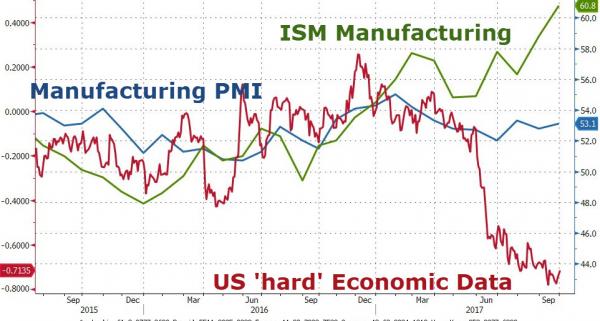Back in November, just following the election of President Trump, I wrote about the market entering into potentially the final “melt-up†phase of the cyclical bull market.
However, while economic and fundamental realities HAVE NOT changed since the election, markets are pricing in expected impacts of changes to fiscal policy expecting a massive boost to earnings from tax rate reductions and repatriated offshore cash to be used directly for stock buybacks.
Â

To wit:
“We expect tax reform legislation under the Trump administration will encourage firms to repatriate $200 billion of overseas cash next year. A significant portion of returning funds will be directed to buybacks based on the pattern of the tax holiday in 2004.â€Â – Goldman Sachs

“But it is not just the repatriation but lower tax rates that will miraculously boost bottom line earnings. This time from Deutsche Bank:
‘Every 5pt cut in the US corporate tax rate from 35% boosts S&P EPS by $5. Assuming that the US adopts a new corporate tax rate between 20-30%, we expect S&P EPS of $130-140 in 2017 and $140-150 in 2018. We raise our 2017E S&P EPS to $130.’â€
Of course, since then it has been a “fast and furiousâ€Â push to buy stocks regardless of what geopolitical or economic event was taking place.

Of course, the advance is stock prices has been based purely on “hopeâ€Â as nothing legislatively has actually occurred towards passing tax cuts. While no bill has been written as of yet, all of the net benefits of tax cuts have been likely priced in by the markets.
I am not discounting the rush by companies to buy back shares at the greatest clip in the last 20-years to offset the impact to earnings weak revenue growth. However, none of the actions above go to solving the two things currently plaguing the economy – real jobs and real wages.Â
“This is also why Trump’s recent tax cut policy will fail to fuel the economic prosperity he is hoping for. With the bottom 80% of the population still earning below $50,000 on average, a tax cut will do little to increase their consumption in the economy. Those in the top 20% may well see a tax-savings from the reform but they are already consuming at a level that will likely not change to any great degree.†– The Bottom 90% & The Failure Of Prosperity

Furthermore, from an economic standpoint, most of the indicators suggest we are in a very late stage cycle relative to the markets and are acting in a similar manner as have been seen prior to the last two recessions.

As I stated back in November:
“The rush by Wall Street to price in fiscal policy, which may or may not arrive in a timely manner, will likely push the markets higher in the short-term completing the final leg of the current bull market cycle. This was a point I addressed back in October on the potential for a rise to 2400 in the markets. With the breakout of the market to new highs, the bullish spirits have emboldened investors to rush into the most speculative areas of the market.
For now, it is all about the ‘Trump’ trade. Which is interesting considering that just before the election we were all told how horrible a Trump election would be for the world economy.â€
However, it should be noted that despite the “hopeâ€Â of fiscal support for the markets, longer-term conditions are currently present that have led to rather sharp market reversions in the past.

As I addressed this past week, the current environment is diametrically opposed to that of the Reagan era “tax cuts.â€Â Therefore, the “hopesâ€Â being built into the market may ultimately be met with rather severe disappointment.
Regardless, the market is currently ignoring such realities as the belief “this time is different†has become overwhelming pervasive. As noted last week, we increased equity exposure in portfolios with the breakout above 2500. However, with the sharp rise over the last two weeks, we are beginning to look to take some profits out of small and mid-capitalization exposure and have been aggressively buying bonds this past week.
While we remain bullishly allocated currently, we are also keenly aware of the risk. As an example, the current deviation above the long-term trend line has reached more extreme levels. There is also the issue of deviations above the long-term trend line. Trend lines and moving averages are like “gravity.† Prices can only deviate so far from their underlying trends before eventually “reverting to the mean.â€Â However, as we saw in 2013-14, given enough liquidity prices can remain deviated far longer than would normally be expected. But even that advance finally gave way.

